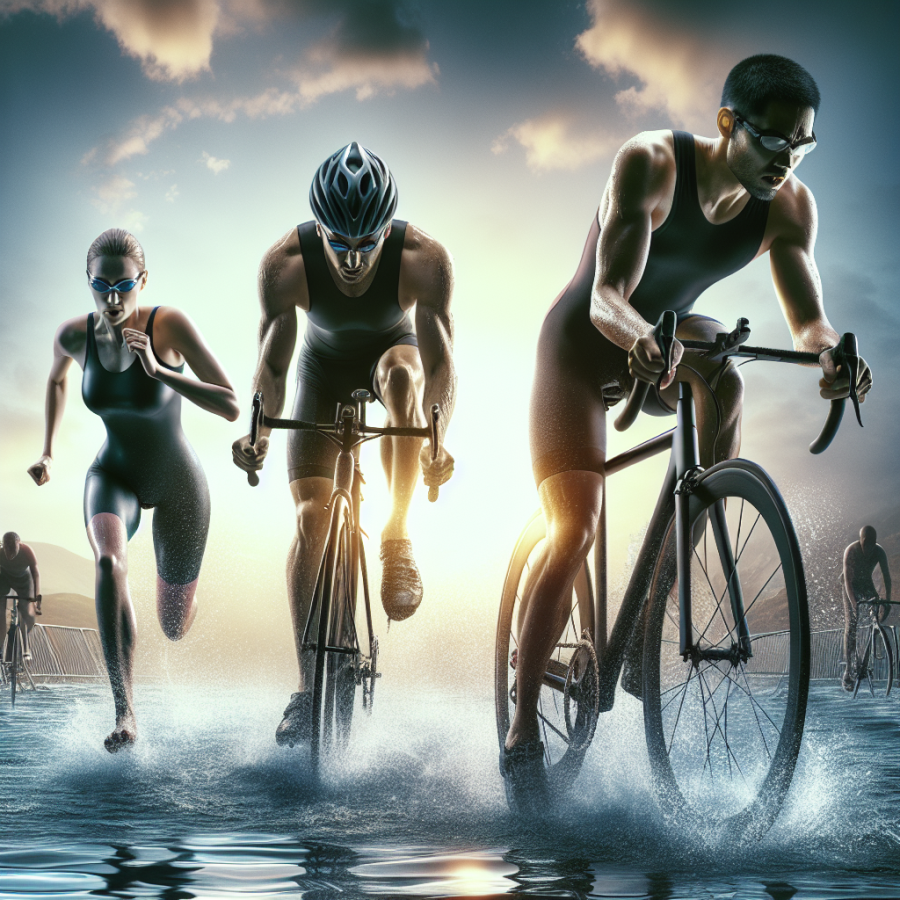Understanding the Science Behind Proper Triathlon Nutrition
As a triathlete, your body is your most important equipment, and proper nutrition is a key element that fuels it. When participating in a triathlon, you’re not only racing against your competitors, but also against your own physical limits. A suitable diet and nutrition strategy is paramount to optimize your performance and recovery.
Understanding the nutritional requirements appropriate for your training and competing in triathlon can be quite complex, given the nature of the three sports involved. Each section of a triathlon - swimming, cycling, and running - stresses different muscles and burns calories at different rates. Therefore, your strategy for fueling each section needs to be distinctly tailored.
Before we go further, it is essential to comprehend that each athlete's nutritional needs will differ widely depending on various factors: age, gender, body composition, training load, and any specific dietary requirements or restrictions. Therefore, it would be best to consult a dietitian or a sports nutritionist with expertise in endurance sports. However, there are some general principles that form the base of a solid nutrition plan for triathletes.
Firstly, achieving a balance of macro- and micronutrients is vital. Macronutrients comprise carbohydrates, proteins, and fats. Carbohydrates are the primary source of energy for high-intensity exercise such as triathlon. Always aim to consume complex carbohydrates like whole grain bread, oatmeal, and brown rice as against simple sugars.
Protein is crucial for repairing and building muscles after heavy training sessions. Lean meats, fish, eggs, dairy products, and plant sources like beans and quinoa are good sources of protein. Fats, especially unsaturated fats, are needed for long-duration, lower-intensity training and races.
Micronutrients, chiefly vitamins, and minerals, are required in smaller quantities but play a vital role in energy metabolism, immunity, and bone health. Fruit and vegetables should account for a large proportion of your food intake to ensure you’re getting enough micronutrients.
Hydration is as important as solid nutrition. Dehydration greatly impairs performance and can be dangerous. Daily hydration is essential and practicing your drinking strategy for race day is just as important.
Next, establishing a race day nutrition plan, often called fueling, is hugely important. During a triathlon, most athletes will burn more energy than they can ingest, thus the importance of a pre-race meal.
Read also:
Unveiling the Origins: Where Did Soccer Really Come From?
Essential Training Techniques for Triathlon Success
Triathlon success hinges on a blend of endurance, strength, skill, and strategy. It is no surprise, therefore, that effective training is key to mastering the art of triathlon and pursuing success. Here are some essential training techniques that can help athletes optimize their training, improve their performance and achieve their triathlon goals.
The first technique is periodization. This refers to the process of dividing a yearly training plan into specific times of training. Training is systematically structured to produce peak performance at the right time. The training year is divided into small, manageable phases, or periods, which allow for focused training and recovery. Each period has a specific goal such as building a base, developing strength and speed, or tapering before a major event.
Another paramount technique is cross-training. The essence of triathlon is the performance in three different sports – swimming, cycling, and running. Cross-training involves engaging in physical exercises to strengthen the non-dominant parts of the body. It helps in the development of multiple muscle groups, improved cardiovascular physical condition and reduced risk of injury.
Incorporating strength training into your schedule can substantially improve your performance. Strength training not only prevents injuries, but it also boosts overall speed, power, and efficiency. This training can target major muscle groups involved in swimming, biking, and running, such as the core, quadriceps, glutes, hamstrings, and upper body.
Including hill training into the routine can significantly ramp up the aerobic and anaerobic systems and make the legs stronger. Hill workouts improve speed, build muscle strength and boost the cardiovascular system. While hill running can develop leg strength and cardiovascular fitness, hill biking can increase power and bike-handling skills.
High-intensity interval training (HIIT) is another excellent way to boost aerobic and anaerobic fitness, enhancing the capacity to sustain high-speed for a long duration. HIIT sessions involve short bursts of high-intensity exercise followed by a short period of rest or recovery. These workouts are typically intense and burn more calories than traditional workouts, enhancing endurance and fat burn.
Finally, don't forget the importance of recovery in your training plan. Recovery is integral to physical progress - during this time, your body adapts to the stress of exercise, replenishes energy stores, and repairs damaged tissues. Implementing proper nutrition strategies, adequate sleep, and rest days or active recovery days can significantly enhance performance and health.




